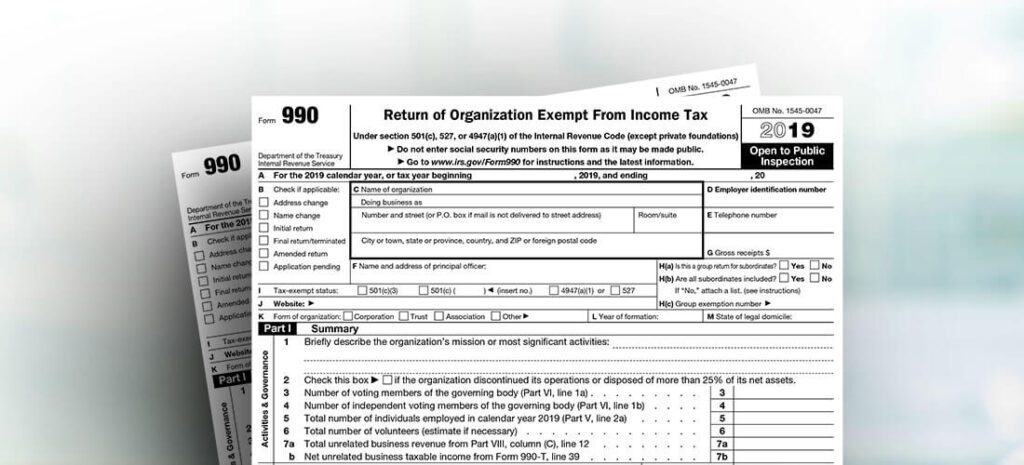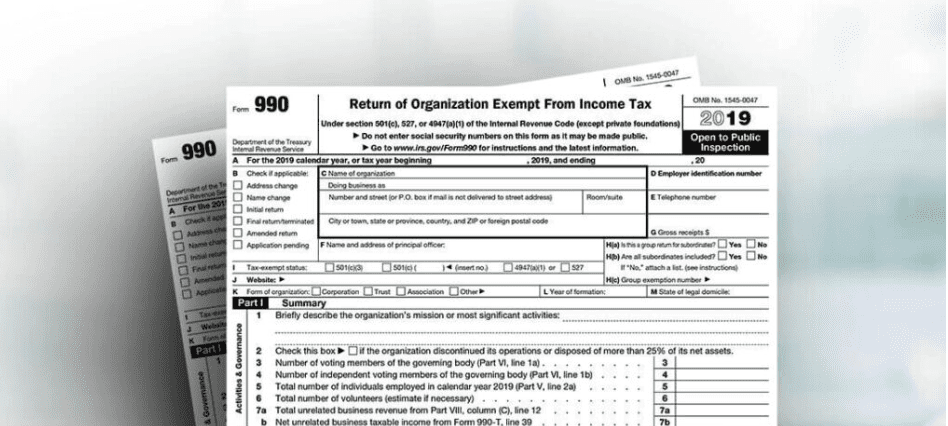Using form 990 to Research and Assess Charities

When you’re considering giving money to a charitable organization, especially if the gift is significant, it’s vital to know that the money is going to a worthy place. You want to be absolutely clear on the organization’s mission, and you’ll want to be comfortable that your hard-earned money will be going toward fulfilling that mission.
To that end, one invaluable resource is the tax records of the organization. These forms can often provide much more data than just accounting numbers, and much of the information can be digested, even by people who aren’t accounting and taxation finance gurus!
For most tax-exempt organizations, the form you’re looking for is the 990. This is required annually by most tax-exempt organizations. Some are specifically exempted from the requirement like churches and faith-based organizations or affiliates of organizations who file the data at the ‘parent’ level.
For those who must file, the type of 990 depends largely upon the size of the organization. Groups whose gross receipts are normally less than $50,000 can file the short form 990N. This is essentially a ‘postcard’ that simply confirms the organization is still operating.
Organizations with higher gross receipts but with gross receipts less than $200,000 and assets less than $500,000 get to file the ‘short form’ 990EZ, and organizations higher than that level are required to file the full form 990. The former is 4 pages while the latter is a more ‘onerous’ 8 pages. Private foundations file form 990PF.
Where do I Find It?
All of these forms are readily found online, from a number of resources. Organizations like GuideStar, 990 Finder or Foundation Directory Online Quick Start generally make the 990s available for 3 years, free of charge. For a fee, you can access more years. Additionally, the IRS now makes all their 990s available since 2018, using Amazon Web Services (what business AREN’T they in??)
Can I Deduct My Contribution?
First, just because an organization is tax-exempt, don’t assume you receive a tax deduction for contributions you make to it. Look at the header section of the 990, and one of the first things you’ll run across below the name and address of the organization is the ‘Tax-exempt Status’. Anything selected other than 501(c)(3) is not an organization you can deduct contributions you’ve made to. Section 501(c)(4), 501(c)(5), and 501(c)(6) organizations, while tax-exempt, are not qualifying charitable orgs for the purposes of taking a charitable tax deduction. Neither are political organizations, largely under Section 527. Not that you wouldn’t want to support such an organization… just know you won’t be able to deduct the contribution.
What am I Looking For?
Part I of the 990 provides a summary of the organization. Here, the mission of the organization is spelled out in (hopefully) plain language, and you will have information on the number of people who work or volunteer for the organization. This can be helpful when comparing different organizations. You want to be sure you’re comparing like-sized organizations with similar missions if you’re evaluating several options.
Below this lies a summary of the organization’s financial information. Much like any company’s financial reports, revenue and expenses are laid out over two years. The ‘revenue less expenses’ can be seen as similar to the ‘net profit’ line on a corporate Profit and Loss statement (although, since these are non-profits, that would be a misnomer here!). You have a chance to see how the firm is doing. Is their revenue and/or asset base increasing (healthy) or is it going down (and potentially in trouble)? Here, it makes sense to get more than the most recent 990 to detect trends.
Keep in mind as well that section 1 is a summary of data, much of which can be reviewed in more depth in the attached schedules. For example, line 18 of this section shows the total expenses for the organization. How much of these expenses actually goes to the programs you’re looking to support? The next section (Part III) lays this out program-by-program. Also, Section IX of the 990 tallies up, on line 25, the breakout of these expenses between programs, management and fundraising expenses. Optimally, you want to see higher proportions of the expenses going to support programs and lower amounts to the latter two. Bear in mind, however, that different types and structures of organizations will have different ratios between program expenses and non-program expenses, so if you’re comparing organizations on this basis, make sure that they’re similar in other ways, as well!
Part III of the 990 is arguably the most important part for donors, especially foundations and high-net-worth individuals. Much more detail is given about the organization’s programs, its expenses per program and accomplishments over the year. Any firm filing a 990 who relies on donations (and that’s most of them), should take the time to make this a ‘marketing’ part of the form. It’s really a time for them to show off. Beware of short, terse, or missing data fields here. Also, use the information here to compare what they are doing with the mission stated in the header!
Part IV is really just a long checklist with Yes or No answers. Much of this section serves to identify which other schedules need to be filed with the 990, but look through this because it gives a lot of high-level information as to the types of activities, types of donations and donors, and other potentially interesting facts. It also gives a look at whether the organization has ‘unrelated business income’ that falls outside of its charitable mission and gets filed on form 990T. There are also questions about whether the organization engages in lobbying activity. This is strictly limited for 501(c)(3) organizations, and too much of this can put them into the 527 category (which again means you can’t deduct for contributions you make to them).
Part VI tackles a lot of good questions related to corporate governance. Things like whistleblower policies and conflict of interest disclosures are important, but not legally required, so check in this area to make sure your organization does engage in these important activities.
Part VII deals with compensation of Officers, Directors, Trustees, and certain employees and independent contractors. ALL officers, directors and trustees are listed in this area (something a lot of volunteer board members are not aware of!) whether or not they receive any compensation. Employees only get listed here if they are either ‘Key Employees’ (making over $150,000, in an executive function and in the top 20 employees by compensation) or in the five highest compensated with over $100,000 in compensation. This can help to gauge whether compensation paid is within reason, given the size and scope of the operation. It also helps to illuminate another important area of corporate governance: Independent Directors!
For ‘run-of-the mill’ contributions you make from time to time, just familiarity and feeling good about the organization is usually enough – but do make sure to ascertain its 501(c)(3) status. But if you’re doing some serious contributing or legacy gifting planning, the 990 is a treasure trove. Most foundations require it, and so should you!



